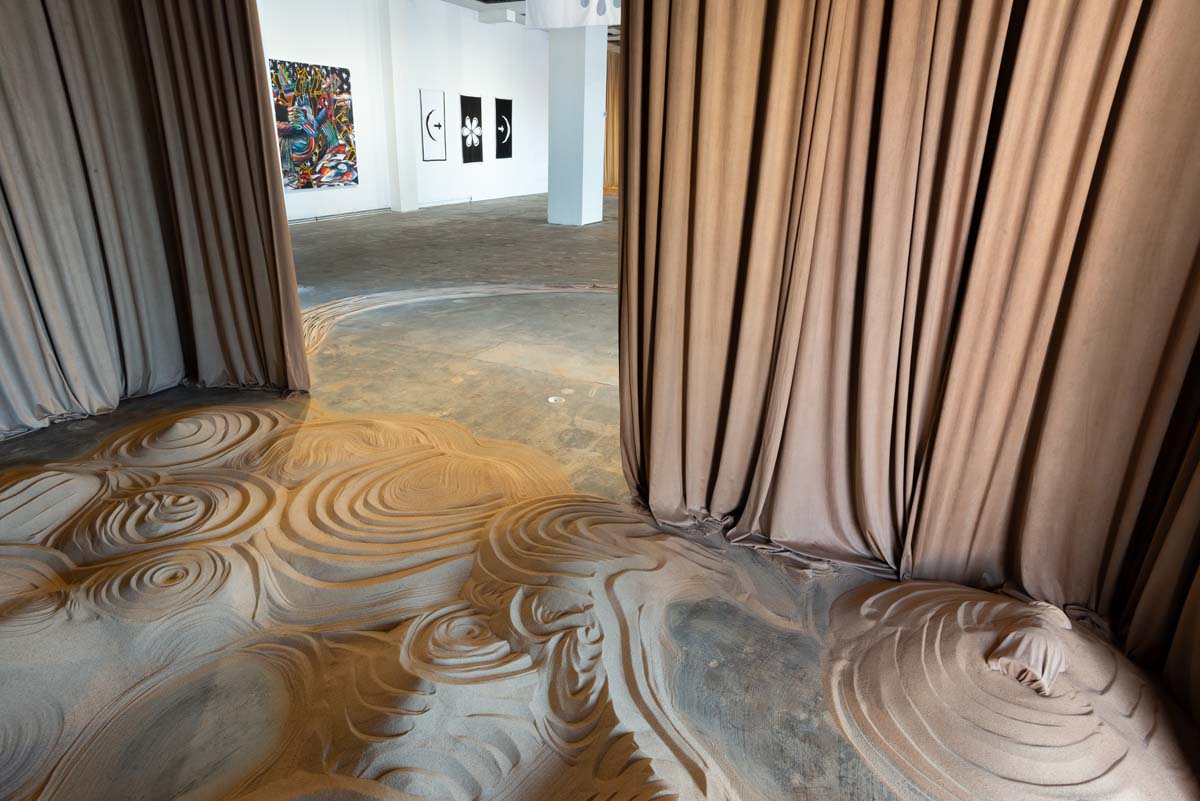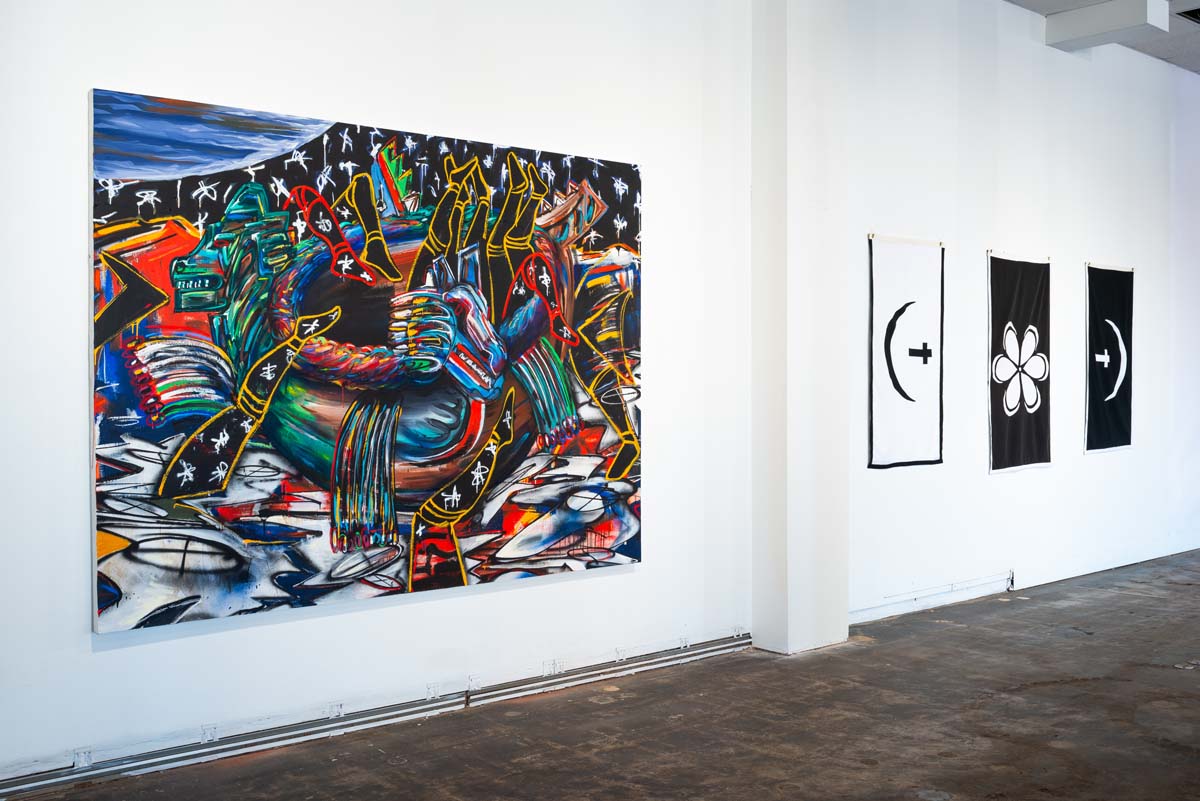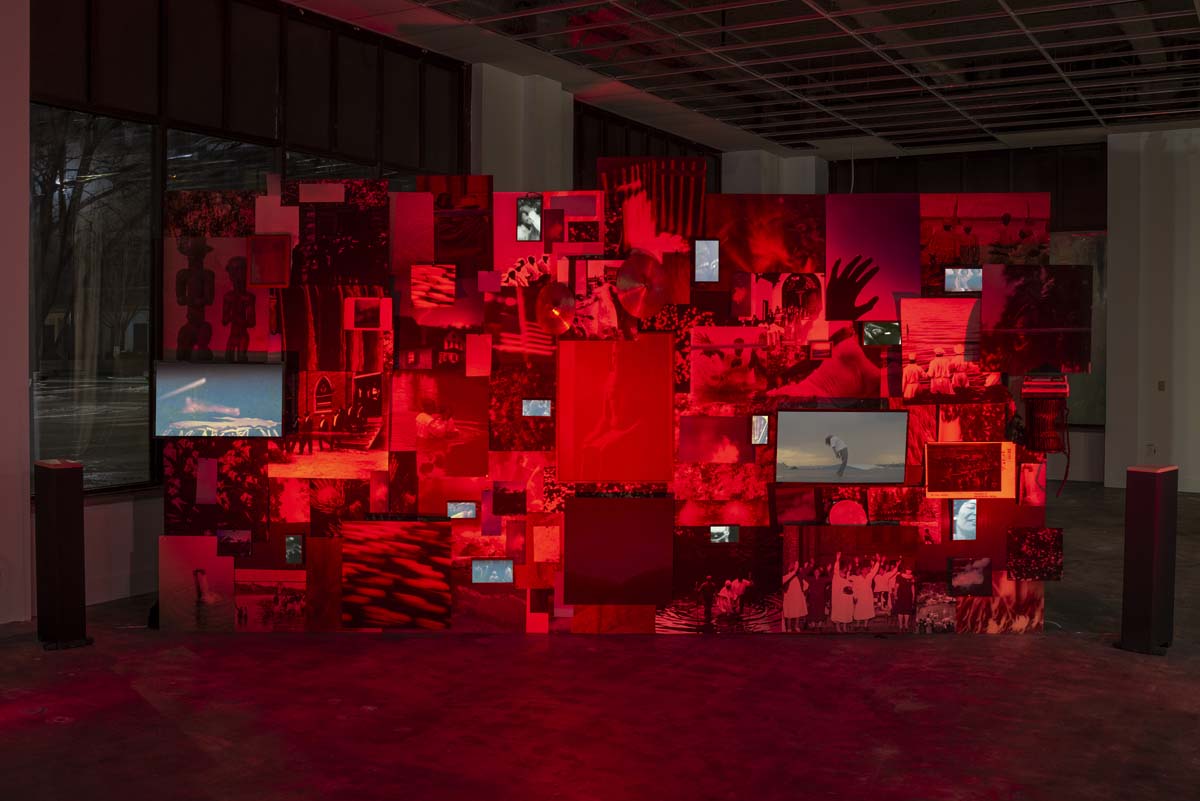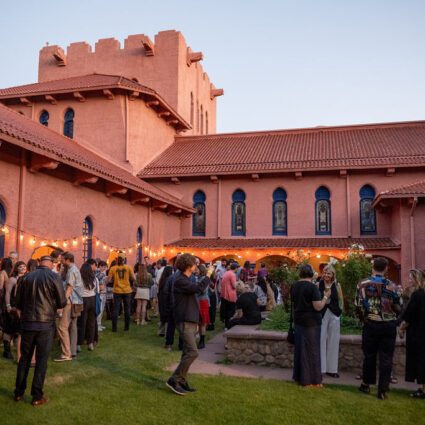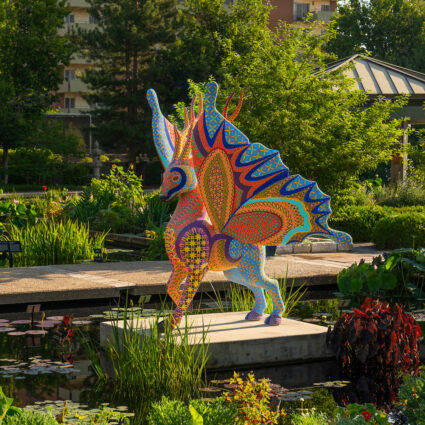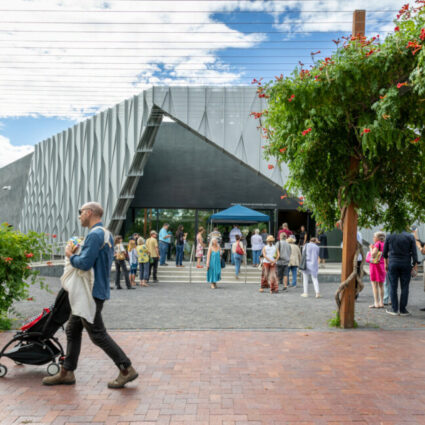Drift///Hold is the ambitious inaugural exhibition of Central Standard in Tulsa with major new works by five compelling early-career artists.
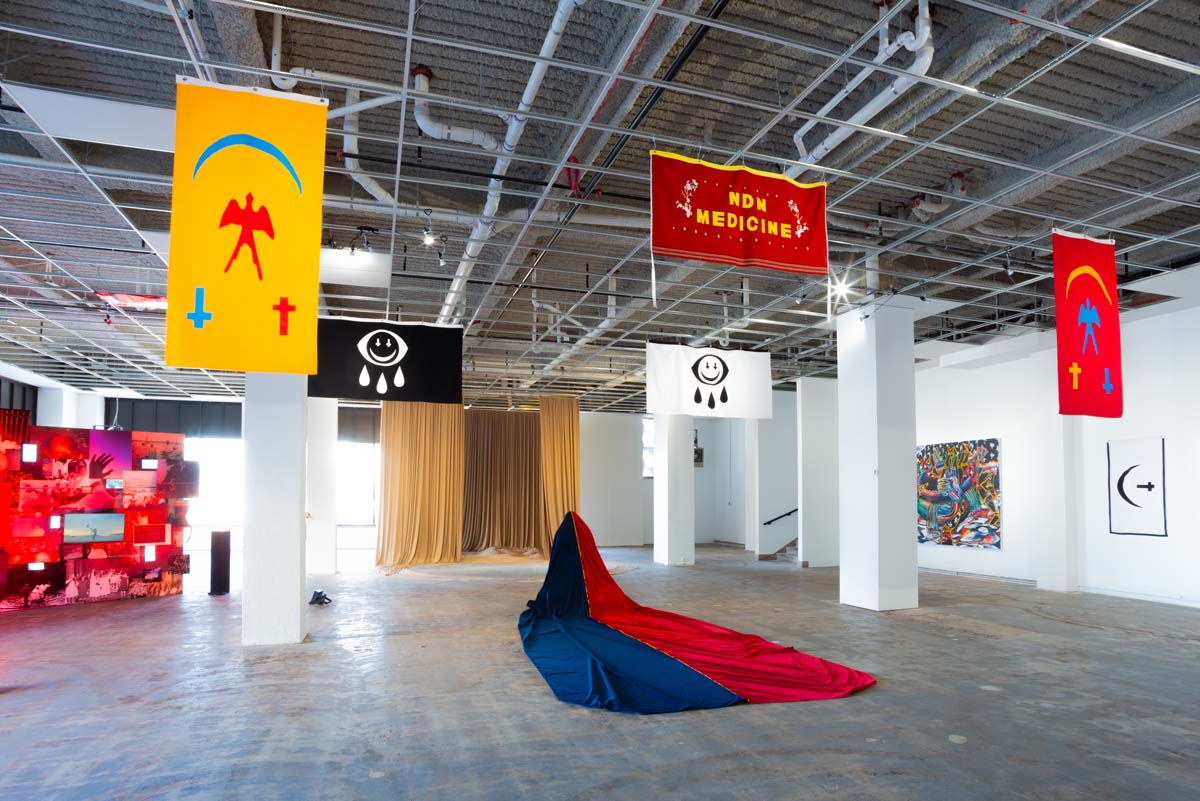
Drift///Hold
February 22–April 18, 2025
Central Standard, Tulsa
The words “drift” and “hold” evoke opposites: forward-looking movement and backward-facing pause. But as political rhetoric, nationally and in red states like Oklahoma, becomes increasingly polarized, can we stretch away from binaries toward the complicated? What happens when you combine the open, future tense of the drift with the rooted nature of the hold?
Drift///Hold, the ambitious inaugural exhibition of Central Standard, a new contemporary art platform co-founded by curator Lindsay Aveilhé and artist/cultural producer Ashanti Chaplin in their hometown of Tulsa, hovers around these questions. It does so through gathering a handful of major new works by five compelling early-career artists currently or recently living in Tulsa: Chaplin, Yatika Fields (Osage, Muscogee, Cherokee), Le’Andra LeSeur, Warren Realrider (Pawnee, Crow), and Nathan Young (Delaware Tribe of Indians). In this blue dot amidst the state’s sea of red, the artworks require us to travel across time and space toward ambiguity, to potent effect.
Binary notions are challenged even before entering the exhibition, which occupies the ground floor of a 1949 office building in downtown’s Art Deco district. Here, stunning facades and gilded lobbies evoke the city’s claim as the Oil Capital of the World from the 1920s, yet today quiet streets and hallways point to the market’s subsequent wane. However, signs of revitalization abound, including the repurposing of this and other downtown buildings into apartments and the flourishing of the nearby arts district, anchored by the privately-funded Tulsa Art Fellowship, which partnered on the exhibition and counts those involved as amongst current or former fellows. While developers are amassing further wealth from these efforts, another byproduct of this revitalization is manifested in creative support and space for art, such as Drift///Hold, with its impressive large-scale installations.
Inside the cavernous space, sound—a medium poised for carrying complexity as it worms its way into your ear—abounds. From the entrance, Realrider’s sculptural work Kicka â Tasa’: West Bank Says____ (2025) claims the floor, partly through sound that evokes multiple places and moments. The work features two rows of twelve steel pails, each pair holding a different material—water, soil, orange rope—as if waiting for people to act with them. A soundscape of field recordings furthers this sense, as did an opening performance in which Realrider (recently a headliner in the Ch’íná’itíh [Chinati] Intertribal Noise Symposium, in Marfa, Texas, co-organized by fellow artist Young) created a live score involving the words of Molly Bullock, a local journalist investigating the Arkansas River. While the words called out mistreatment of the environment, the sculpture that remains more subtly harnesses the urgency of action, for this and future epochs.
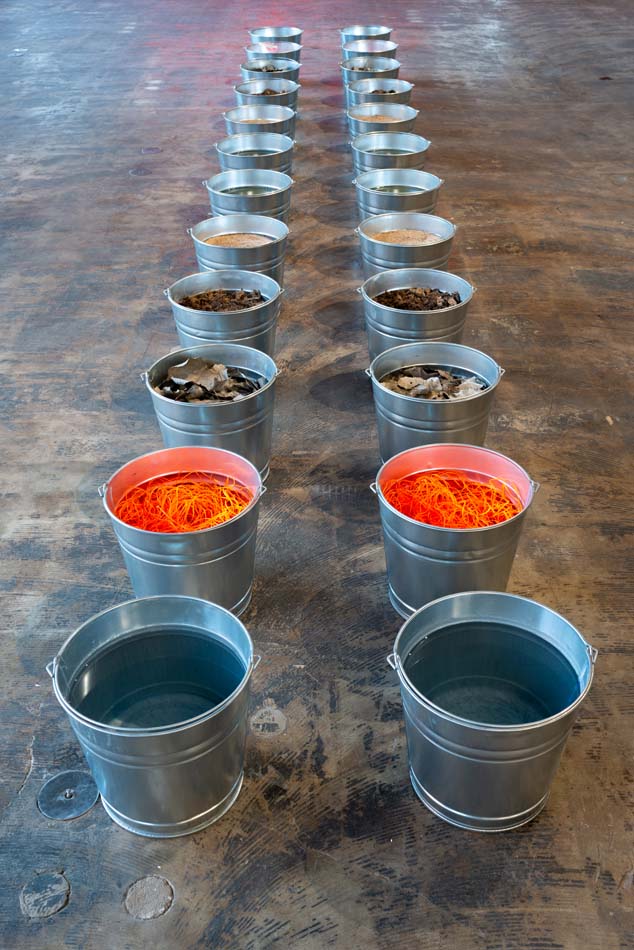
Beyond this, LeSeur’s That body of (a reflection of the sky) (2024), a billboard-sized standing collage, beckons with the sonics of poetics and bathed in red light. The surface of this work, which was first presented last year at Swivel Gallery in New York, is composed of variously-sized prints and video screens featuring archival footage—Black congregants in worship and being baptized, Egyptian and West African sculpture—as well as less narrative imagery, including flowers and water. Like the stacking of time, the images and screens are layered, including objects, such as a pair of cymbals and books on Black spiritualism and music. The sense that many distinct parts (people, histories) together create a never-ending totality is advanced by footage on the work’s largest screen, which presents a Black body—it is the artist—bending backward, as if in pain or ecstasy. Poetic words playing on a speaker ground this epic in our present.
The haunt of time continues nearby, in two new monumental installations by Chaplin. From her Sediment as Reliable Narrator series, each features cascades of earthen-hued fabric spilling ceiling-to-floor into sand (they follow her recent projects involving curtains and local sediment, presented and performed in Oklahoma and Los Angeles). Subtitled Shroud and Sail (both 2025), the works here evoke terrestrial topographies, yet also their apparent opposite: water. An abstract soundtrack advances the sense of drama, and of absent bodies. The powerful results are contemplative, but, in a sculptural feat, also evoke people past, present, and future crossing water into unknown lands.
The stakes are raised more explicitly in Young’s Tune It or Die! (2024-2025) installation that flutters overhead, in the form of eight colorful and black-and-white flags (a version of the work was first presented last summer, at Art Omi in New York). Sewn onto the flags, the majority of which the artist constructed with his mother, are reoccurring symbols, including a crescent moon, a cross, a soaring bird, and petals. The central flag features the words “NDN MEDICINE,” and on the ground below it is an altar-like form covered in a long train of fabric bifurcated down the center, and emitting sounds. These suggest links to the Native American Church, which blends Indigenous spiritual traditions, including the ritual and medicinal use of peyote, with Christianity, a mix that puts faith in the known of tradition and the mysteries of altered states.
The lone painting in the show, Double-Headed Effigy Bowl, Solstice Moon (2025), by Fields, is a knockout, holding its own on a far wall, at nearly seven-by-nine feet of riotous paint. It exemplifies Fields’s skills at occupying the fertile ground between figuration and abstraction. Here the artist, who recently presented sculptures at Garth Greenan Gallery in New York, deploys an expressionist palette and a variety of gestures (spraying, dripping, brushing) that nod to his interest not only in the history of painting but also graffiti and murals. The results materialize a vessel adorned with talismanic heads amidst a watery expanse, and nearly a dozen kicking legs. The scene, which takes place below a darkened sky lit by stars, suggests urgency and abundance, and suggests the contradictory nature of life itself.
We can all be grateful for Drift///Hold, its artists, and its artworks. They demand that we listen and see, and that we summon the known of the past and the potential of the future at the same time in order to drift and hold in the disquieting present.
